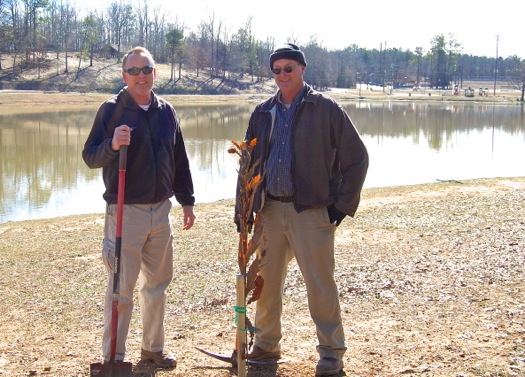Wonderful Winterberry
 Sunday, January 25, 2015 at 5:00AM
Sunday, January 25, 2015 at 5:00AM It was a cold, drizzly day at nearby Aldridge Gardens. A bright red color near the lake caught my attention; and when I investigated, I found a colony of Ilex verticillata, or American winterberry, glowing in the damp, gray air.
Winterberries are deciduous hollies native to eastern North America from Texas to Florida, north to southeastern Canada. They are an important food source for numerous birds, including American robins, bluebirds, bluejays, cedar waxwings and many others. A flock of birds may descend on a winterberry bush and and strip it of its berries in one boisterous banquet! Many mammals, such as raccoons, squirrels and rabbits, also enjoy the fruit.
These are tough, easy-to-grow shrubs. Growing in full sun to partial shade, they love wet, acidic soil but will adapt to other conditions. They can do well in average garden soil. In wet soil they may sucker and produce colonies.
Like many other hollies, winterberries are dioecious, needing separate male and female plants to produce berries. They may blend into their surroundings much of the year; but their bright berries persist on bare branches long after their leaves have fallen, and they can be spectacular in the winter landscape, at least until the birds get them.
Here are another couple of views of the winterberries at Aldridge Gardens:

There are many cultivars of Ilex verticillata available. They can vary in form and size from about three feet up to sixteen feet at maturity. Berry color can also vary. 'Winter Gold' is a female cultivar that reaches about five to eight feet.
Winterberries can be a highlight of the winter garden; and if (when) your feathered friends discover them, watching all those happy birds can be a thrill, as well.



